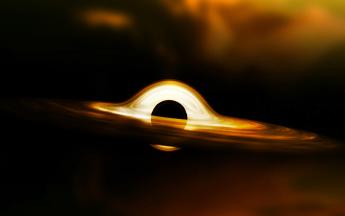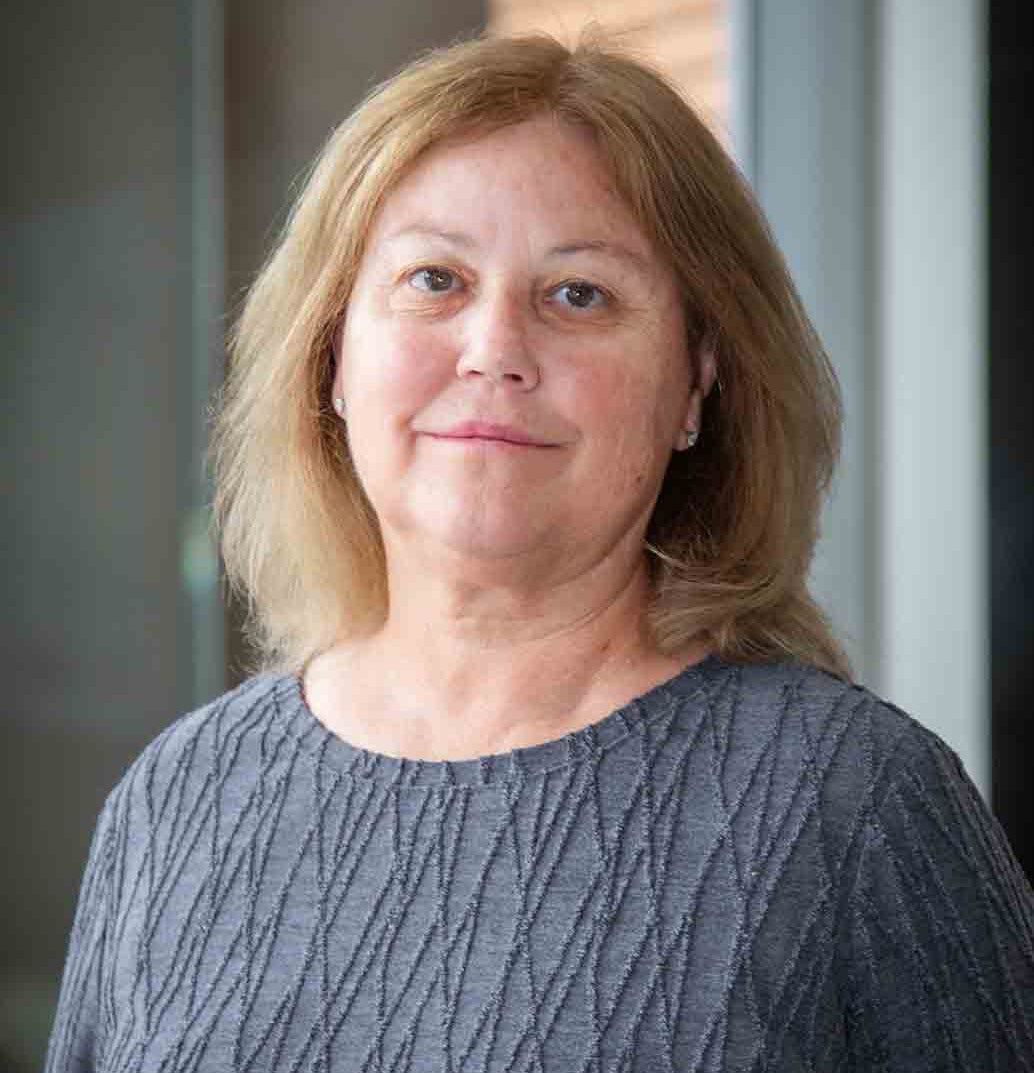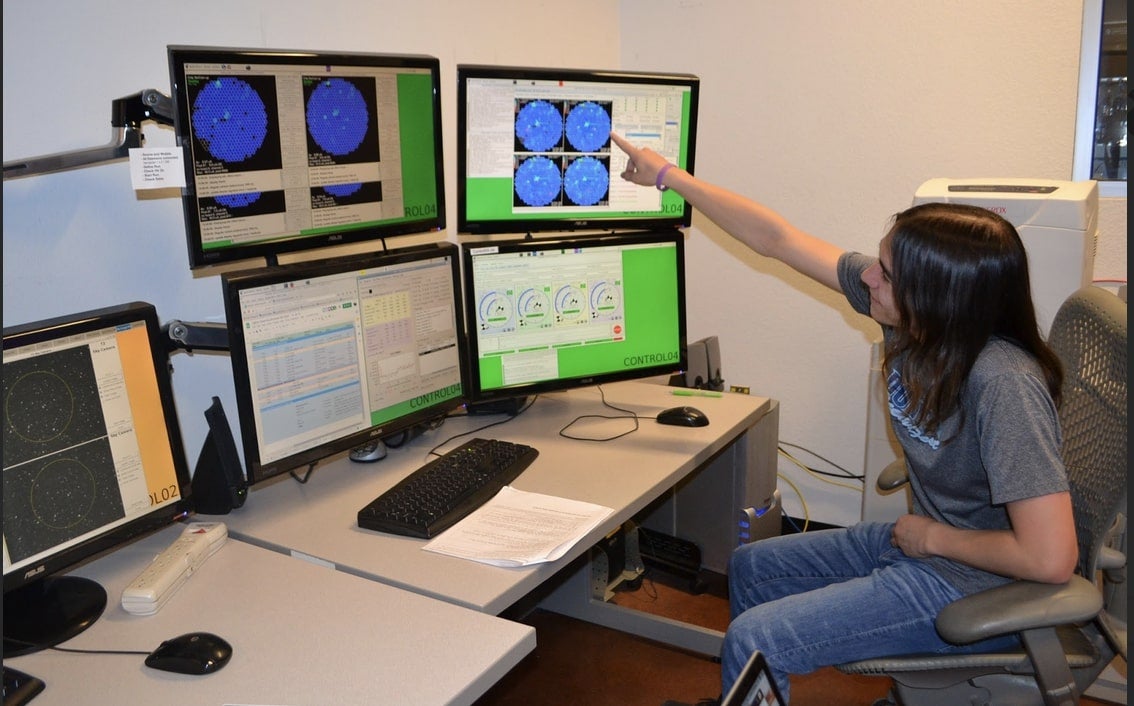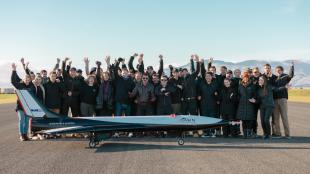Jets Bigger than Galaxies: Professor Studies Energy Blasts Near Supermassive Black Holes

A Cal Poly research team led by physics professor Jodi Christiansen will study extremely high-energy photons emitted by the intense environment found near mega-sized black holes, thanks to the Astronomy Faculty Research Fellowship in the Bailey College of Science and Mathematics.

Christiansen, the 2024 faculty fellow, is working with VERITAS, a ground-based gamma ray instrument supported by Harvard and the Smithsonian, to study very-high-energy photons, or gamma rays, emitted by particles shooting down an astrophysical jet associated with supermassive black holes.
Gamma rays are produced by the hottest and most energetic objects in the universe, such as neutron stars and pulsars, supernova explosions and regions around black holes.
“These gamma rays are extremely energetic, so much so that they can't come from a hot star, which just isn’t energetic enough,” Christiansen said. “What we’re looking at comes from the environment near a supermassive black hole.”
A black hole is an area of such immense gravity that not even light can escape from it, and is typically formed by the death of a massive star. Black holes suck in just about anything in their proximity — but some of that matter can escape as high-speed jets of particles and radiation.

Rotating around a black hole is an accretion disk, a massive field of gas, dust, asteroids and other matter swirling at massive speed. The disk, which produces X-rays and optical infrared and radio electromagnetic radiation, reveals the black hole’s location. Some of the accretion disk material is vacuumed into the black hole, while other parts may be forced out as jets.
Most galaxies have a supermassive black hole at their center, she said, and some release energy in the form of enormous blasts of particle streams.
“There’s still a lot to learn about the physical mechanisms that produce the jets,” Christiansen said. “We don’t know why jets are formed. But we are very interested in how that energy can be released from this environment around the black hole.”
The plasma particles that the Cal Poly team observes come from an environment that is so powerful that the “atoms have fallen apart,” Christiansen said.
“Our images have shown jets that are bigger than galaxies,” she said. “This jet structure is huge compared to the galaxy. There aren’t a lot of places in space that produce this level of energy."
Christiansen said that the high-energy gamma rays that reach Earth offer insights into the density and magnetic properties of the plasma very close to the supermassive black hole.

Christiansen's work has included research and viewing trips to the Fred Lawrence Whipple Observatory in southern Arizona, where VERITAS (Very Energetic Radiation Imaging Telescope Array System) gathers data from the night sky using a set of four 12-meter telescopes. She has also remotely analyzed computer-based imaging from the site.
The facility, owned and operated by the Smithsonian Astrophysical Observatory, has enabled research activities using gamma-ray and cosmic-ray astronomy.
In recent years, Christiansen’s Cal Poly research teams have been active in discovering blazars, which are streams of high-energy electromagnetic radiation that are directed at an angle that points toward Earth.
A few years ago, Christiansen developed a software algorithm for a VERITAS telescope that improves the resolution of the device by about 25% — and that allows scientists to detect signals with 30% less observing time, enhancing the ability to discover rare blazars and other astronomical phenomena.
The Astronomy Faculty Research Fellowship launched in 2023 thanks to a generous donation from the Marrujo Foundation (established by Cal Poly alumnus Daniel Marrujo and his wife, Rosamaria), which covers three years of the program. The fellowship allows faculty to focus more closely with students on scientific research, offering them cutting-edge experiences as researchers.
The first year of the Marrujo fellowship was led by Elizabeth Jeffery, a Cal Poly assistant professor of physics, who explored data related to locations and brightness of stars to better understand how long they’ve existed. Jeffrey’s work focused on white dwarf stars, which represent the endpoint of a low-mass star’s life.
“The inaugural year of this program has been an amazing journey marked by success, profound insights, and captivating discoveries," said Daniel Marrujo, who earned a master’s degree in materials engineering and a bachelor’s degree in electrical engineering with a minor in physics from Cal Poly. “The Marrujo Foundation is filled with absolute delight as we witness the flourishing landscape of Cal Poly astronomy, and we eagerly anticipate the unfolding of remarkable accomplishments yet to come.”
The Marrujo Foundation supports and works with educational institutions to further research in astronomy, astrophysics and cosmology to establish a world-leading fellowship ecosystem. The foundation’s efforts aim to ensure that institutional work challenges current understanding of space, creates new opportunities and makes a difference in people’s lives across the U.S. and around the globe.


